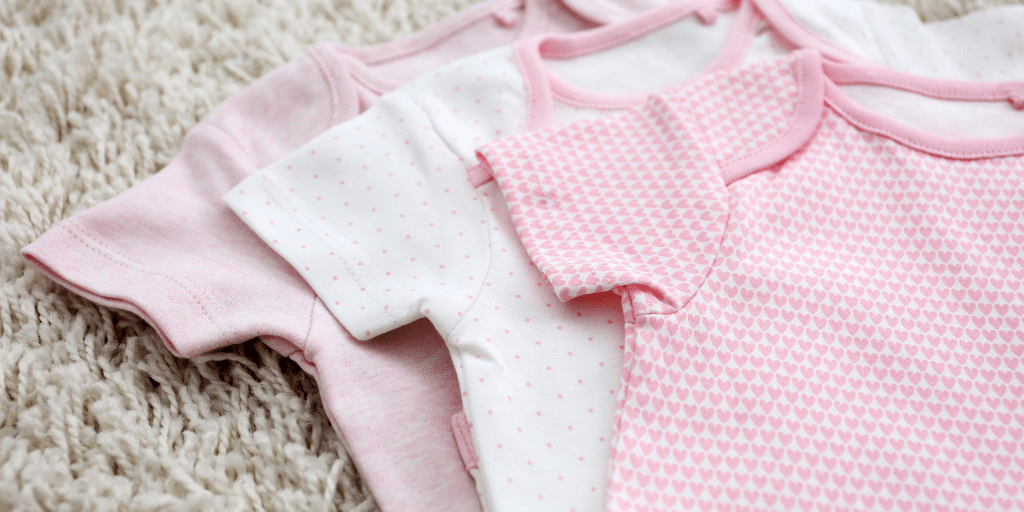Putting your baby to bed can be a tricky time and no matter how well your baby sleeps, knowing what your baby should wear in bed is the first step to a good night's sleep for everyone.
If your little one is not sleeping well, then read our article on tips to help your baby sleep through the night for some handy advice.
Nursery Temperature
One of the first things you need to check is the temperature in the nursery (or your own bedroom when your baby is still sleeping in your room).
The ideal room temperature for babies is between 16-210C (60-690F). To keep an eye on this, use a product such as the Gro Egg, a nursery thermometer or a baby monitor that shows live temperature readings.
We turned to some expert infant sleep practitioners for their advice on what your baby should wear to bed.

Liz at Sleep Nanny
"From a safety perspective, it’s really important to carefully consider what your little one wears to bed. I highly recommend getting a good quality Sleeping Bag. They are really great for helping parents feel confident that their little one is at the correct temperature at night and it keeps little ones cosy in a similar way to swaddling. Sleeping Bags come in different sizes according to your baby’s age and they ensure that loose covers are not a problem. They come in a variety of tog ratings (their warmth level) so you can select the one that is most appropriate for the time of year. Many also come with a guide that provides full information on what your baby should be wearing inside the Sleeping Bag. As a general rule, your baby's bedroom should be between 16 and 200 C (61 to 680 F)."
Nicole at Baby Sleep Site
"For newborns who are swaddled, I recommend they wear a vest underneath a light babygrow (long-sleeved in the winter and short-sleeved in the summer). In the summer, you can probably skip an outfit with feet or socks but in the winter, you may want to keep them on."
Fern at TheBigSleep Co
"The Lullaby Trust suggests that a safe nursery should be around 16 to 200C. Maintaining a room's temperature can be tricky, and if the temperature drops in the early hours, it can cause disturbances. Feel your baby’s chest or back (not their hands which are often cooler) to check for sweaty or clammy skin when deciding whether to add or remove layers. Bamboo or cotton bedclothes are best for sleeping (avoid velour for example). Swaddles or Sleeping Bags have a tog rating, so they can be easier to adjust to the season or weather flukes, rather than blankets that, when folded, may inadvertently overheat your baby and present suffocation risks for wriggly infants. A baby who is too warm may achieve deeper, longer stretches of sleep that would not have been naturally achieved without the warmth, thus raising the risk for SIDS."
Eva at My Sleeping Baby
"Your little one's sleep attire should vary depending on the temperature. If the room is on the cooler side, such as 20-210C, I recommend dressing the baby in a long-sleeved babygrow with a thick 2.5 tog Sleeping Bag. If the room is on the warmer side, around 23-240C, a long-sleeved babygrow with a thinner 1-1.5 tog Sleeping Bag would be more appropriate."
Dana at Sleepsense.net
"All humans prefer to be on the cooler side rather than being too warm when we sleep, yet most parents tend to over-dress their babies for sleep. One-piece pyjamas or a babygrow are the best because they will not ride up or get bunched up, making the baby uncomfortable. I also suggest a lightweight Sleeping Bag over pyjamas."

Hopefully these tips will help you decide what your baby should wear for sleeping at night and for naps.
If you're using a Pack ‘n’ Play for daytime or holiday naps, don't forget that SnoozeShade’s air-permeable fabric means that the temperature remains the same inside the crib as it does in the rest of the room with the SnoozeShade for Pack ‘n’ Play
Further Reading:
Seven Expert Tips to Help Your Baby Sleep Well
Top 10 Baby Sleep Myths Busted
Tips for a Perfect Baby Shower




